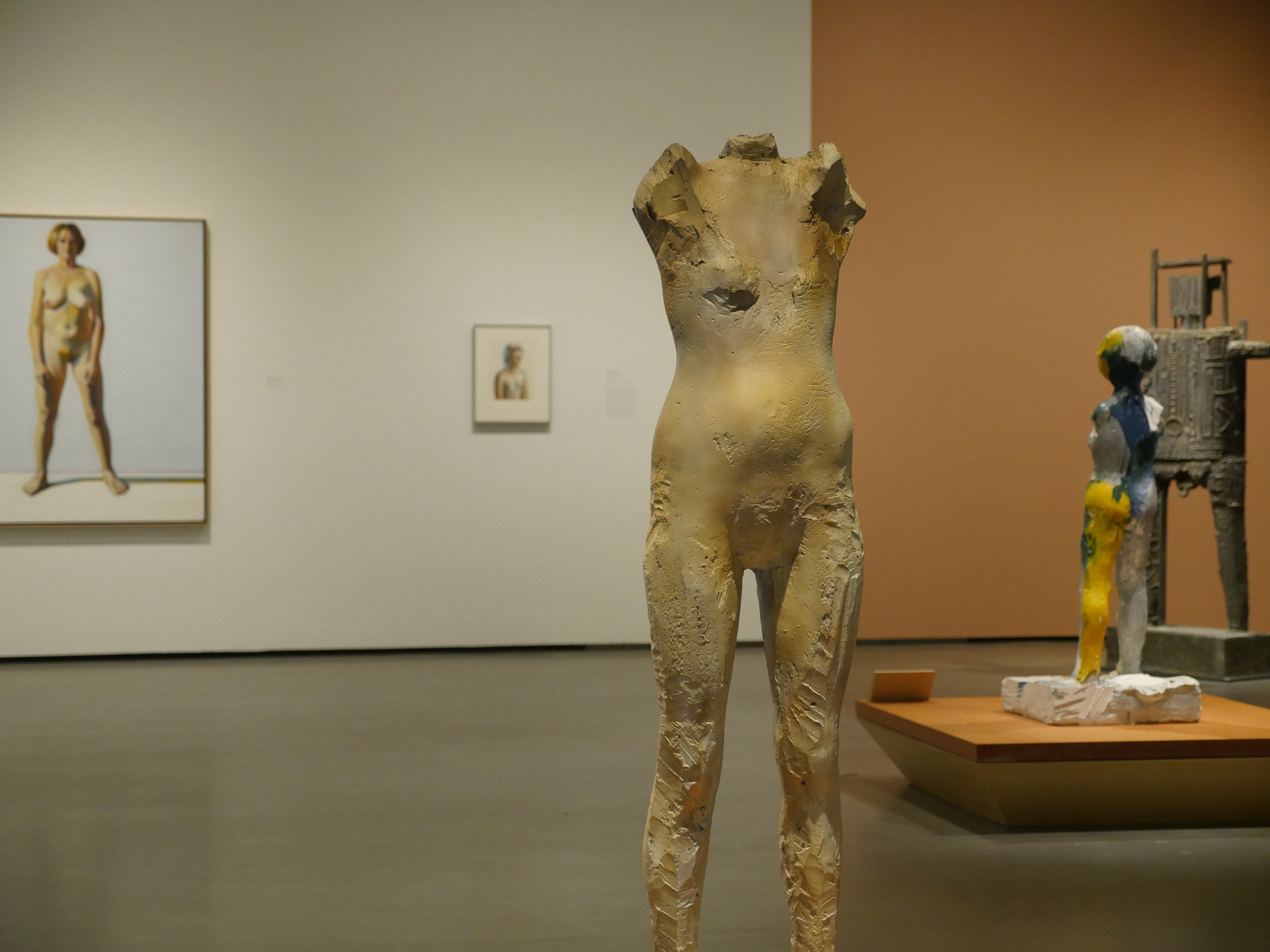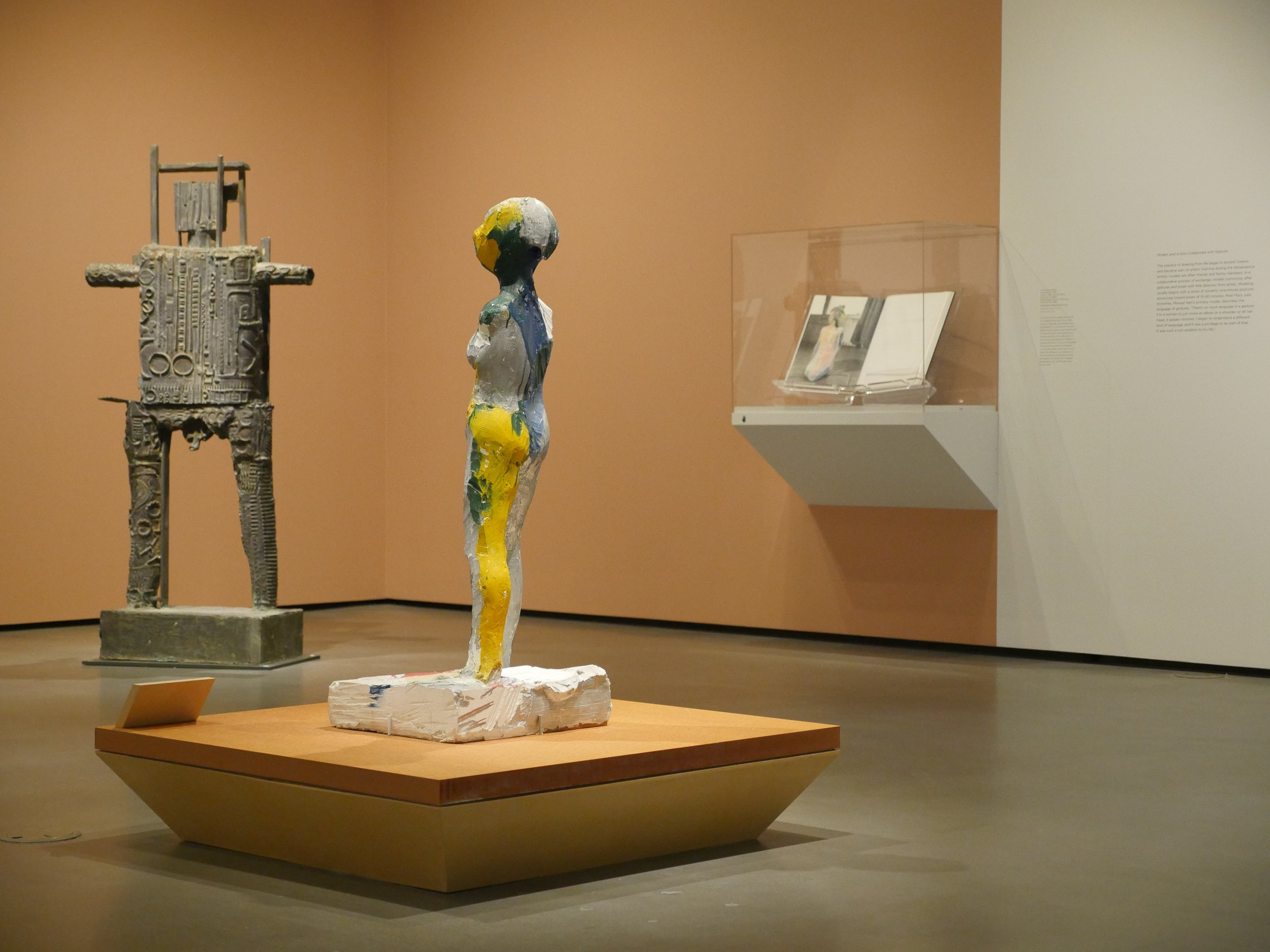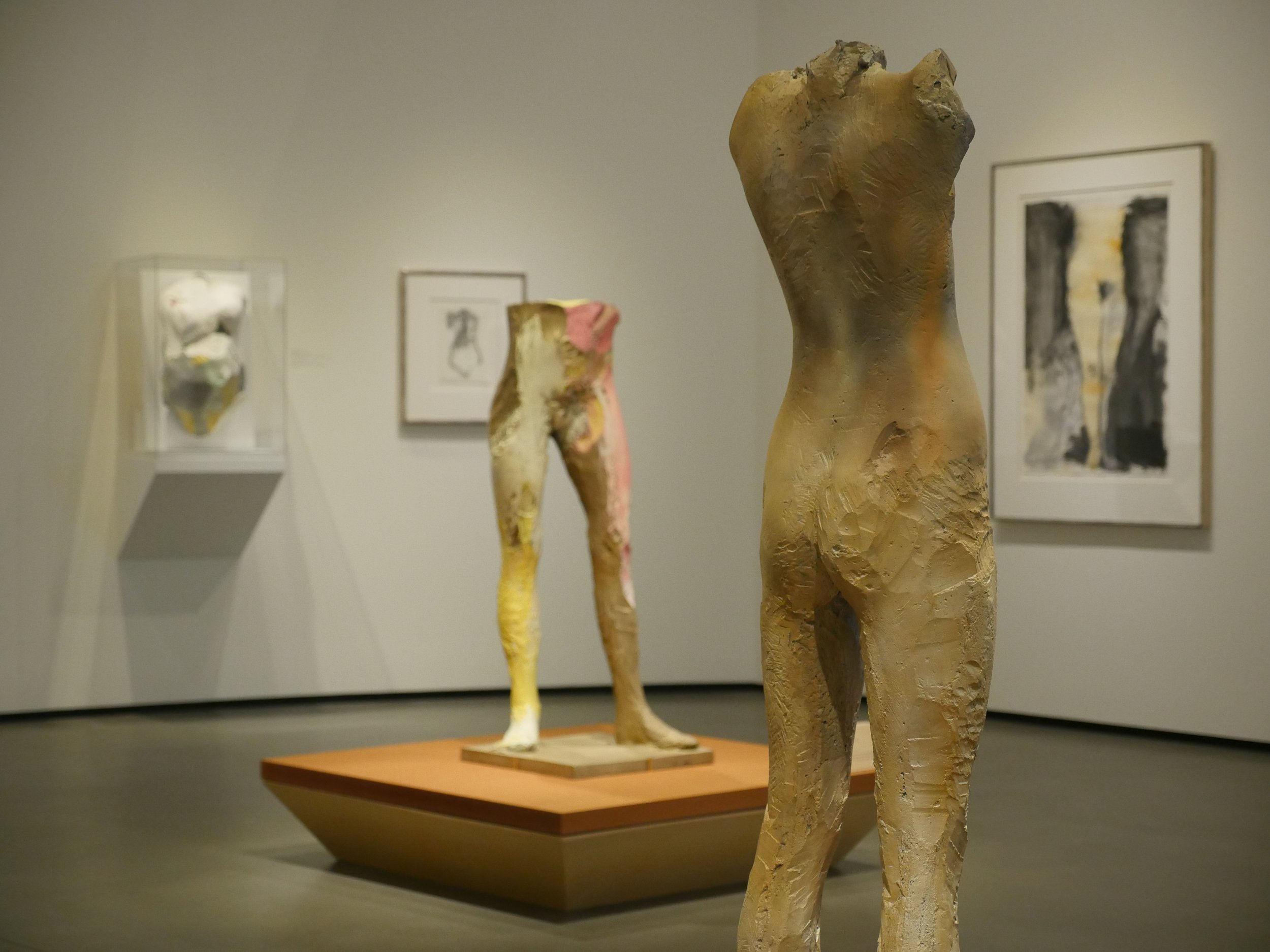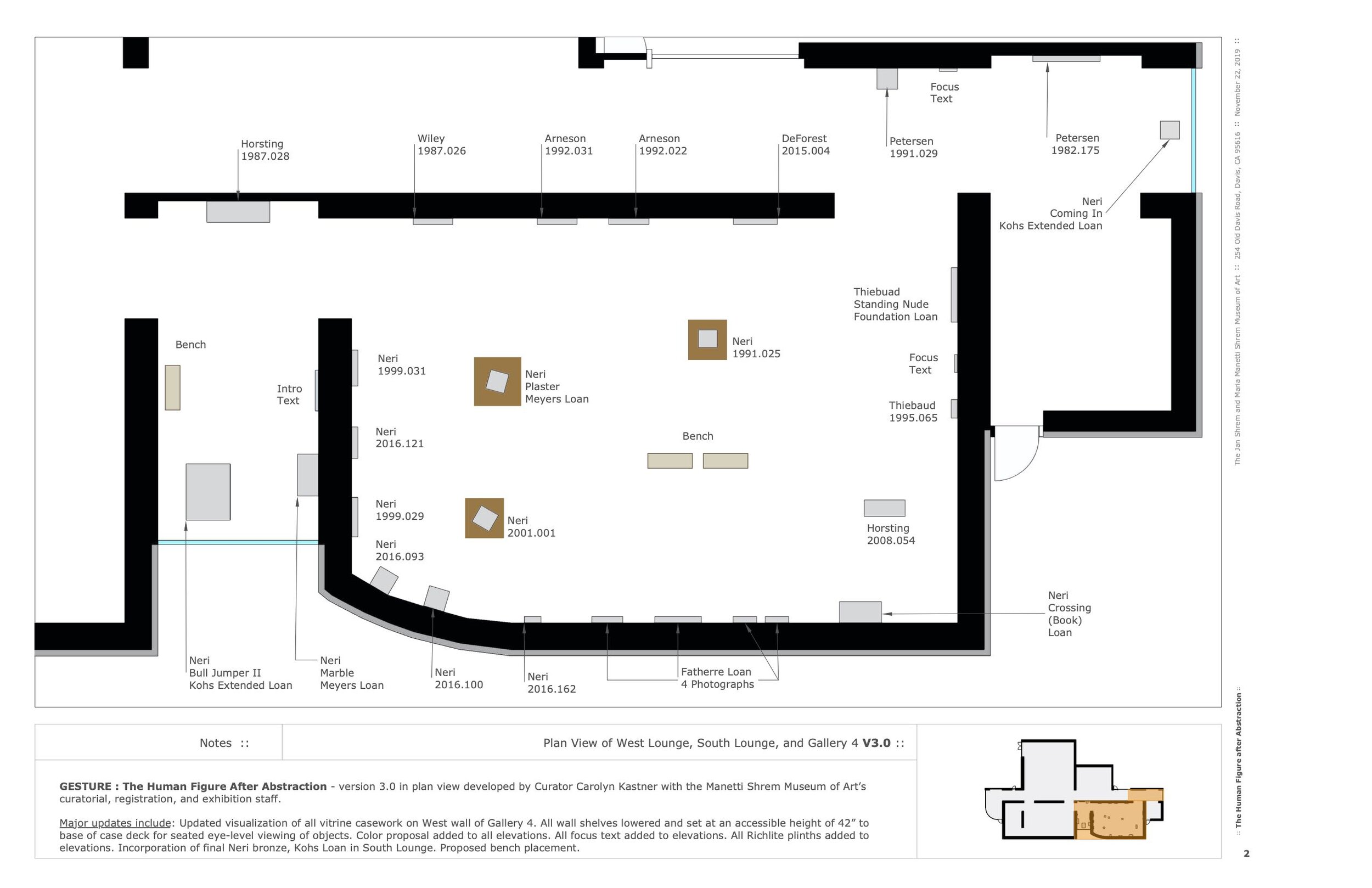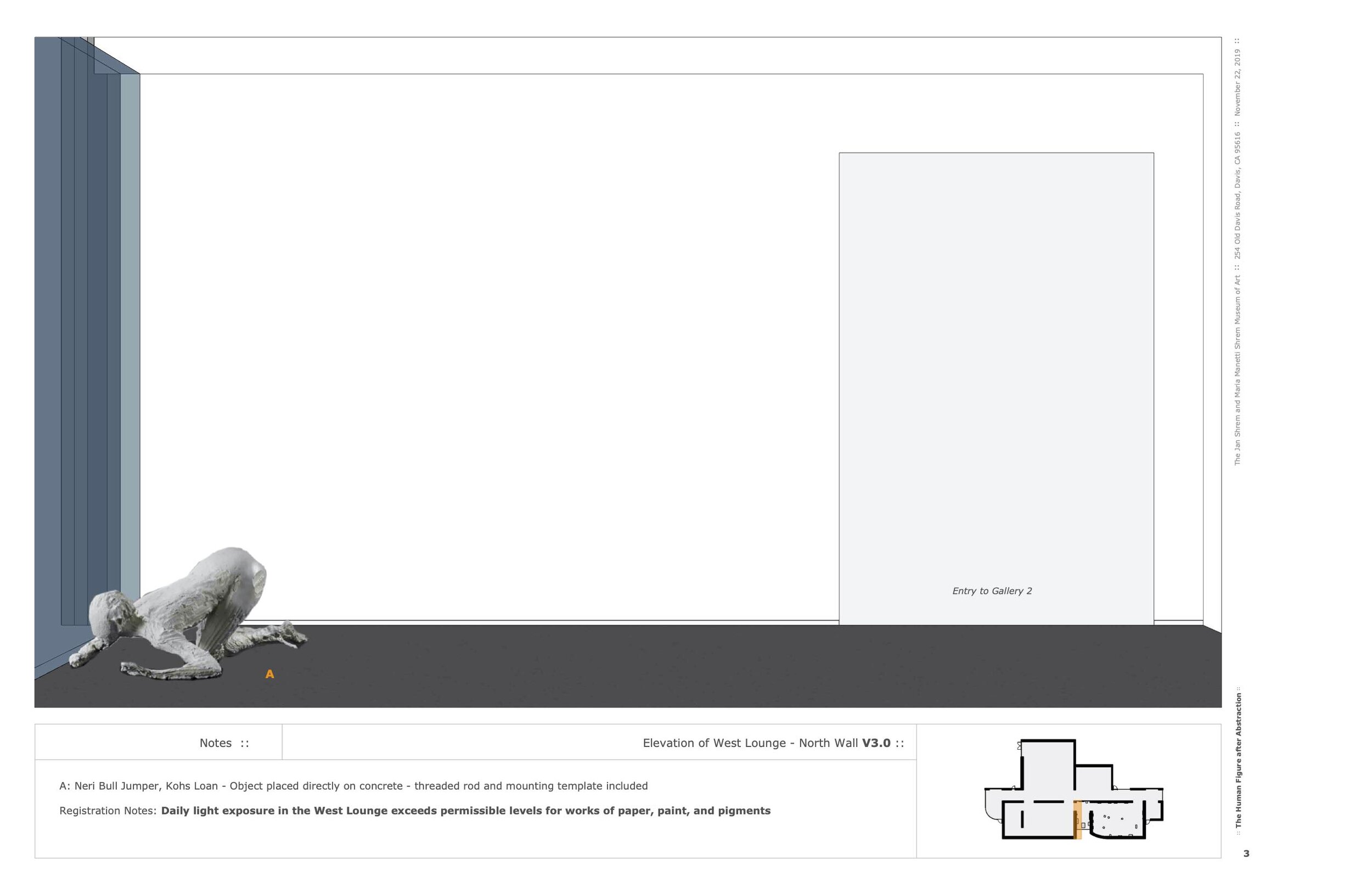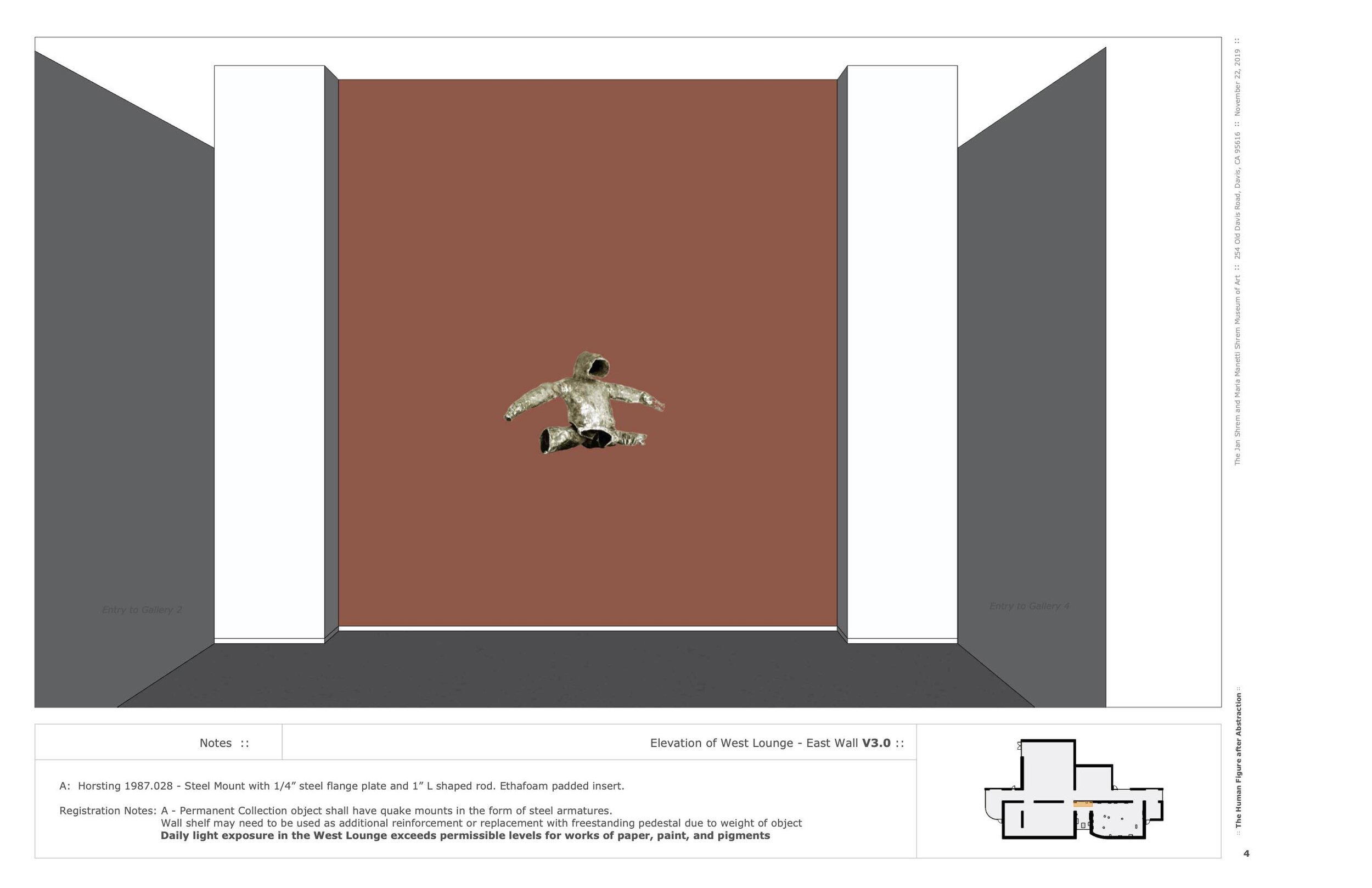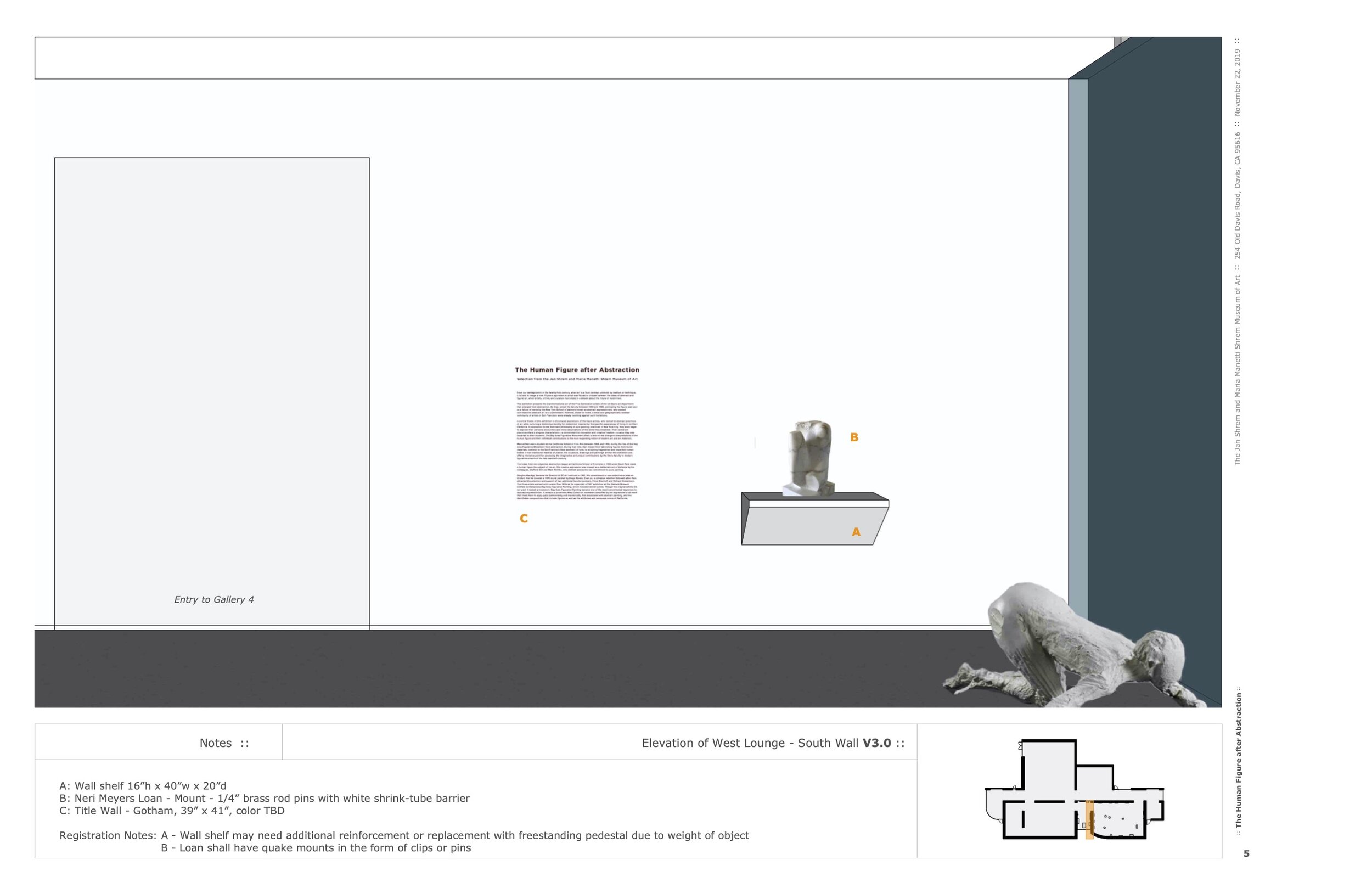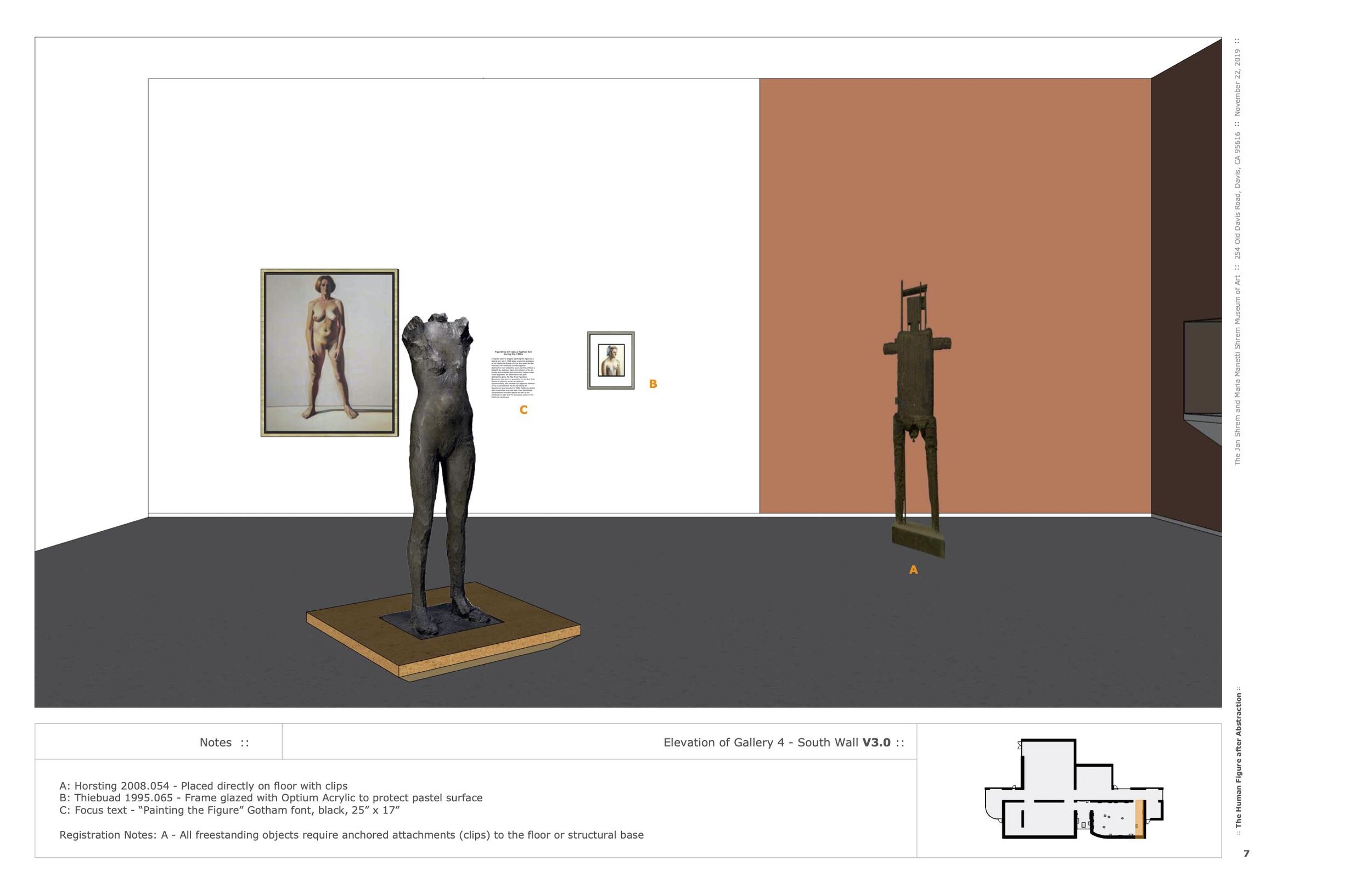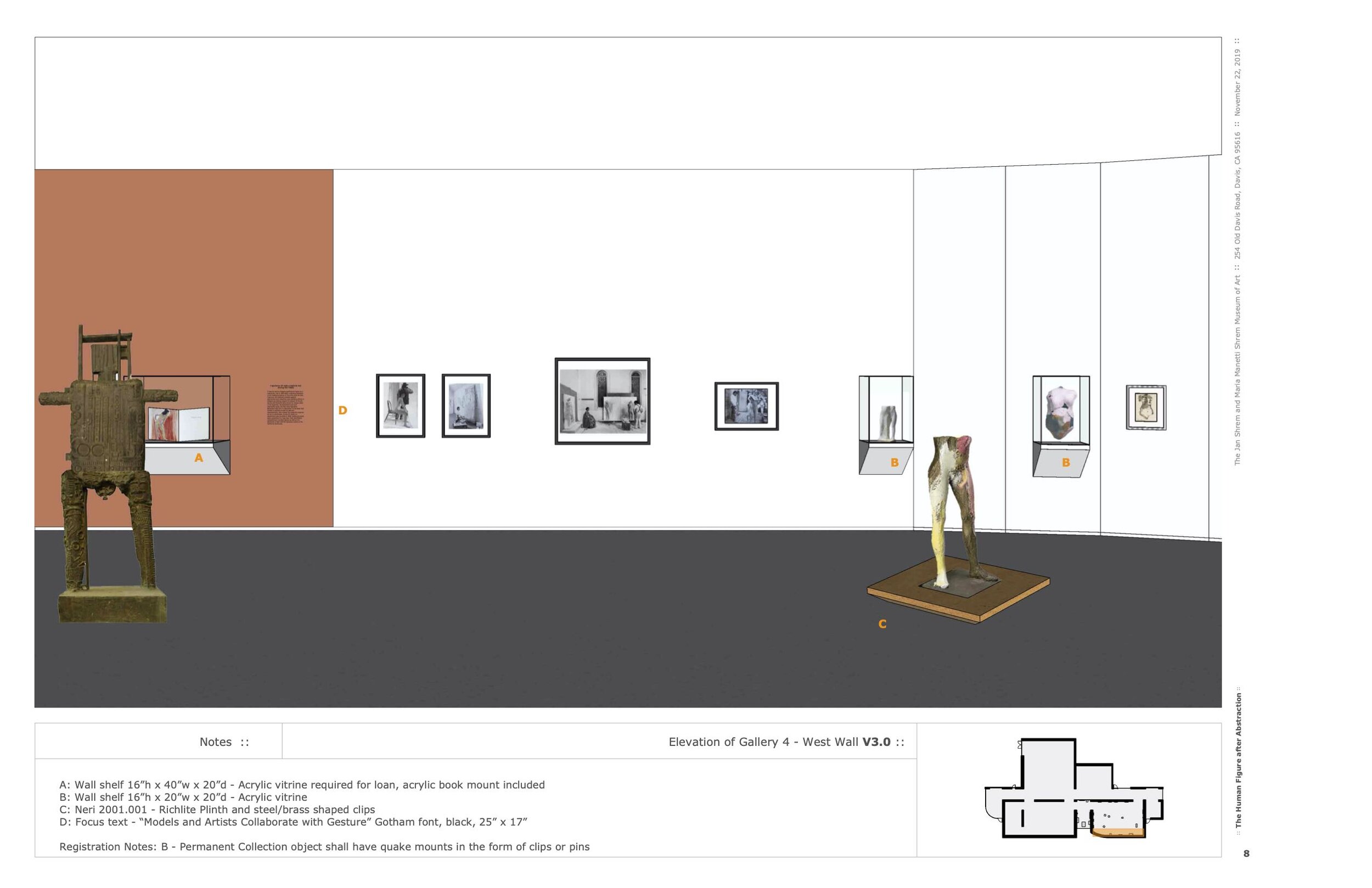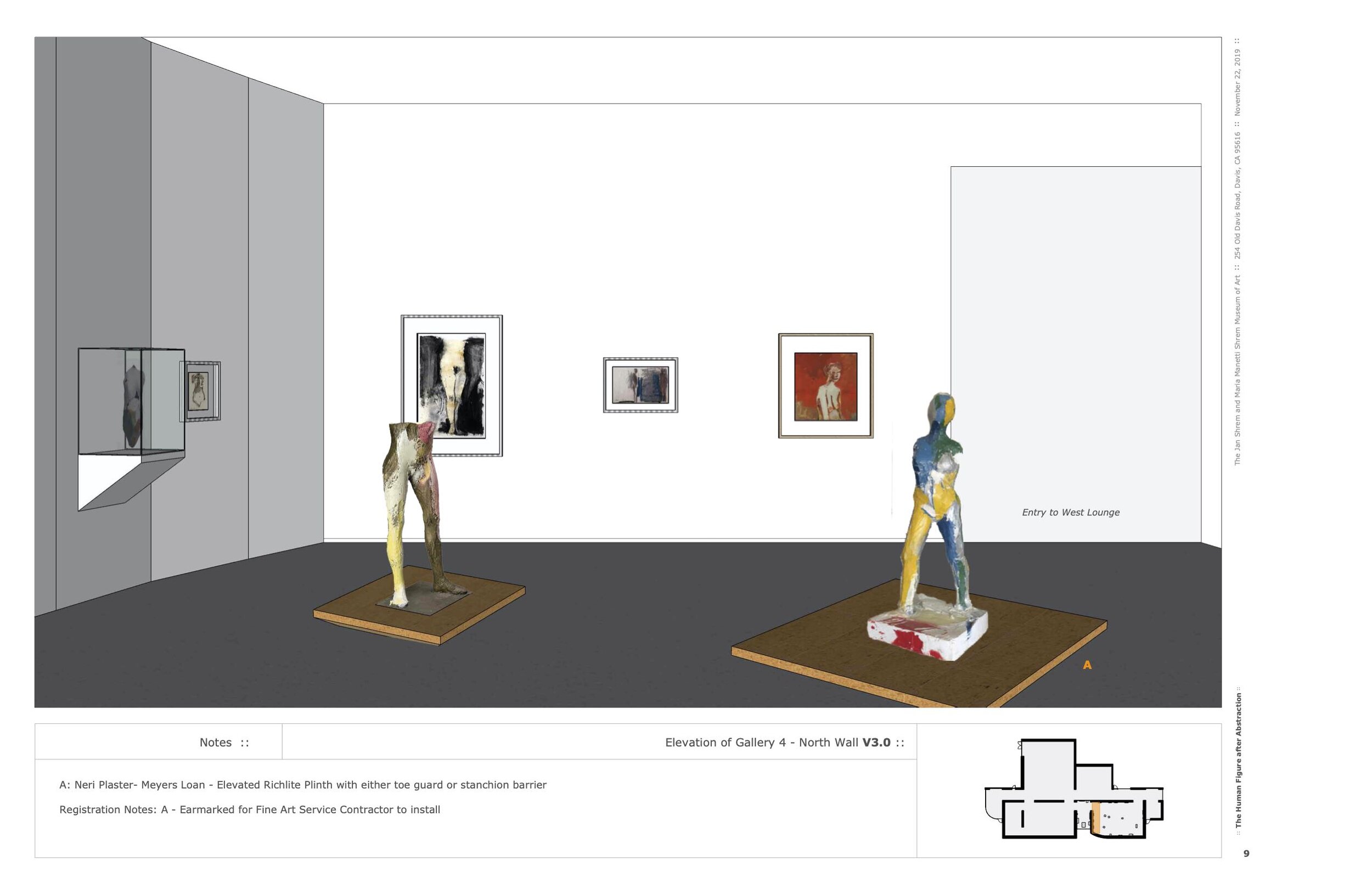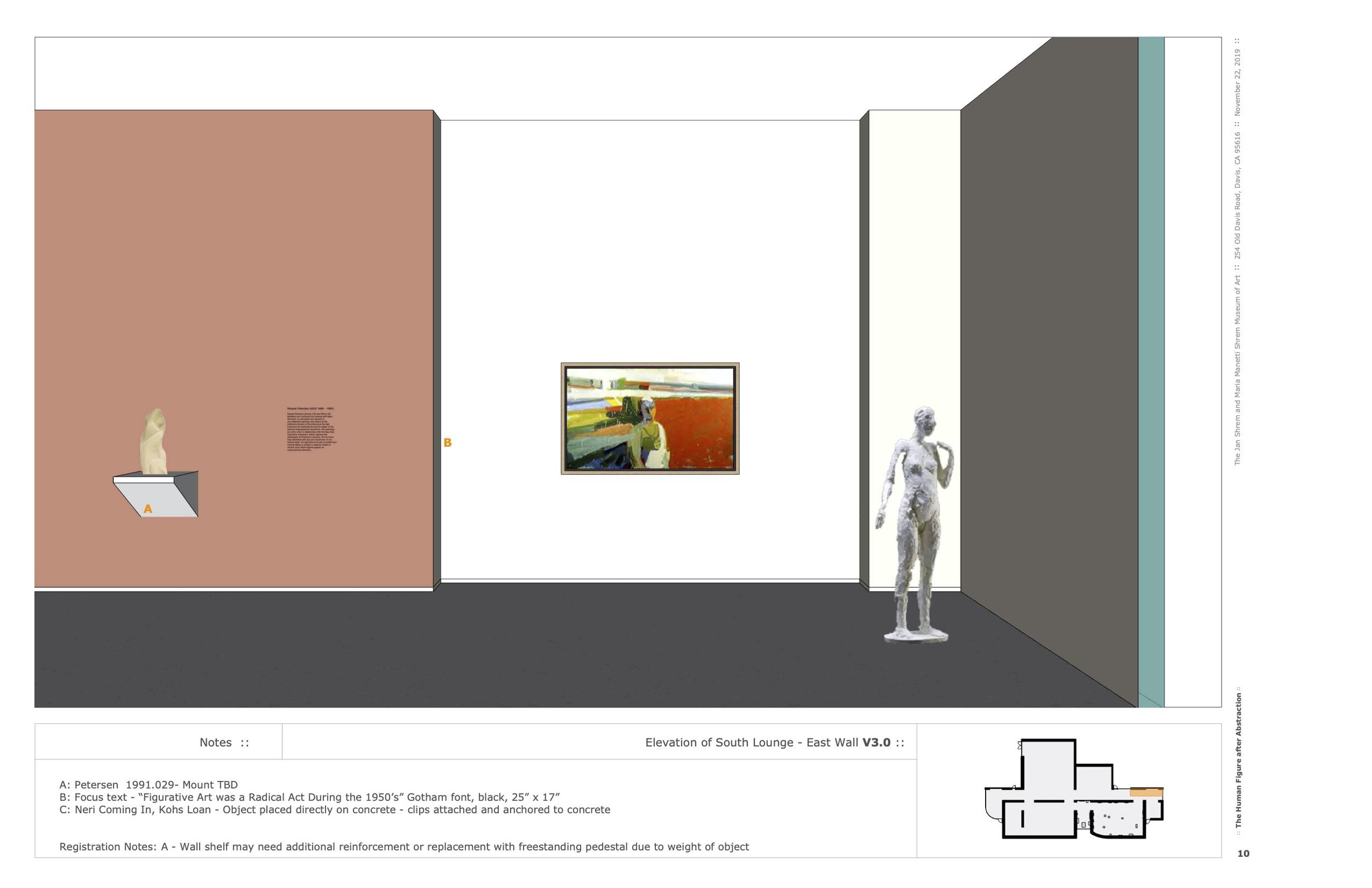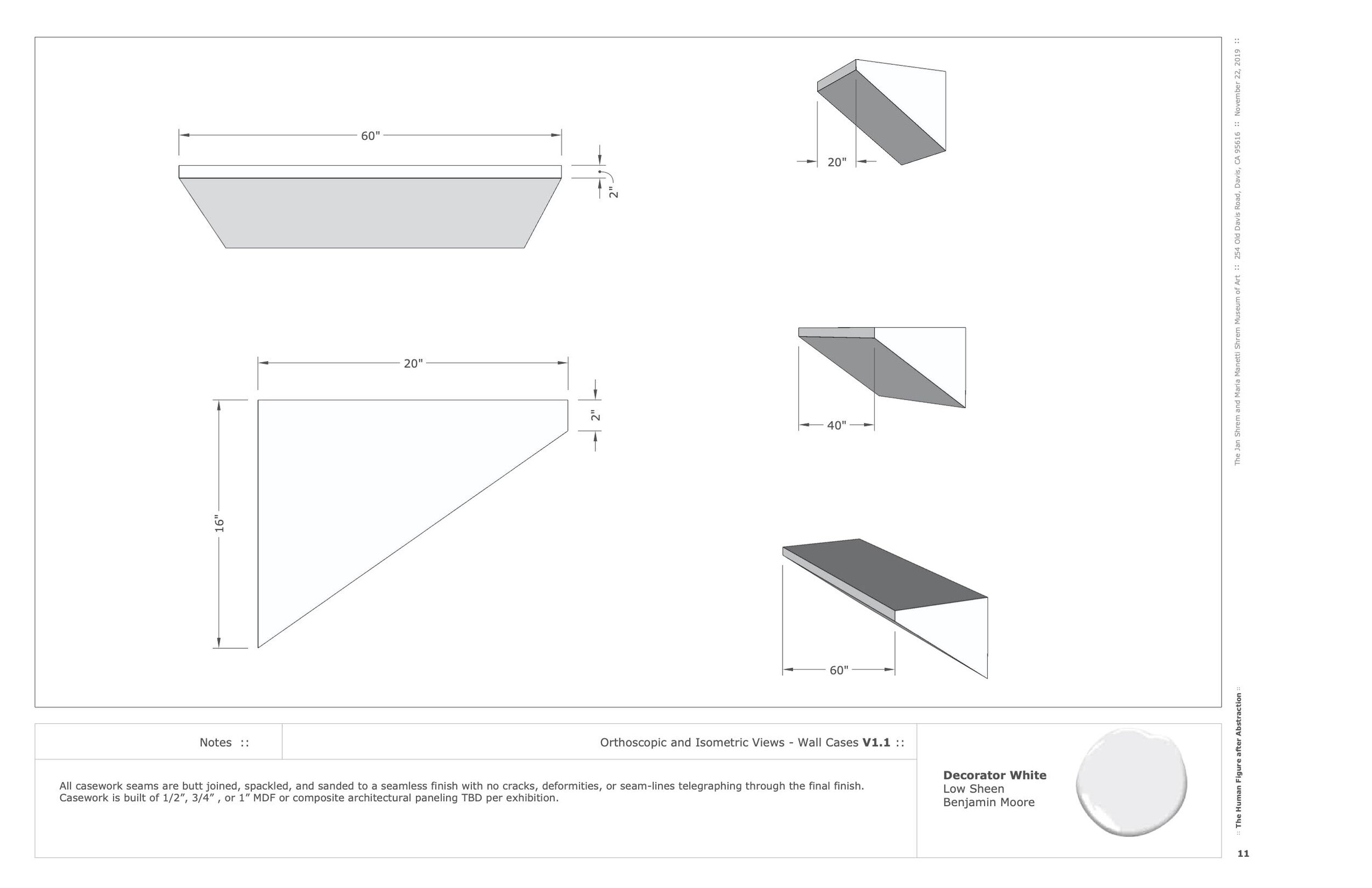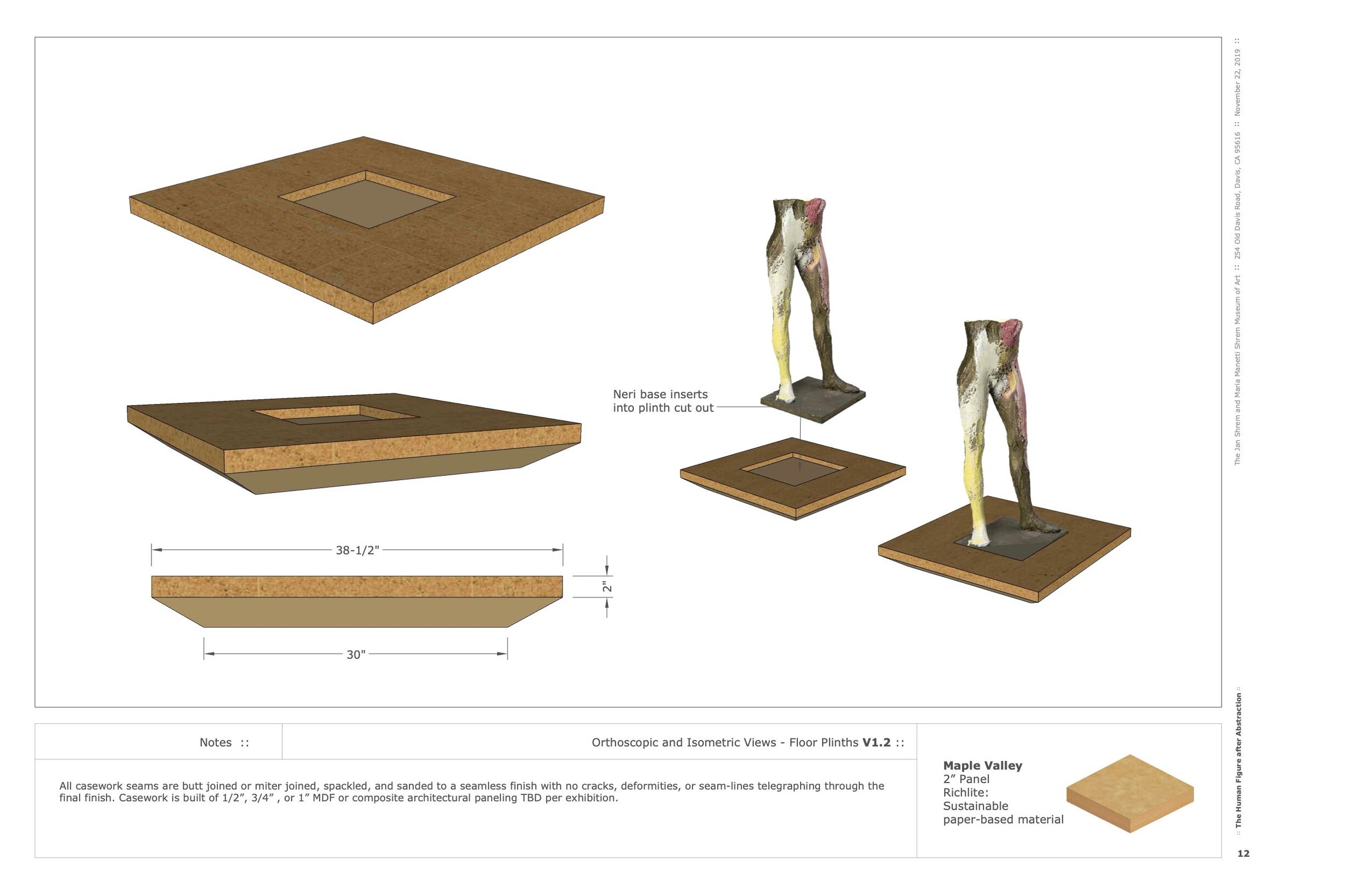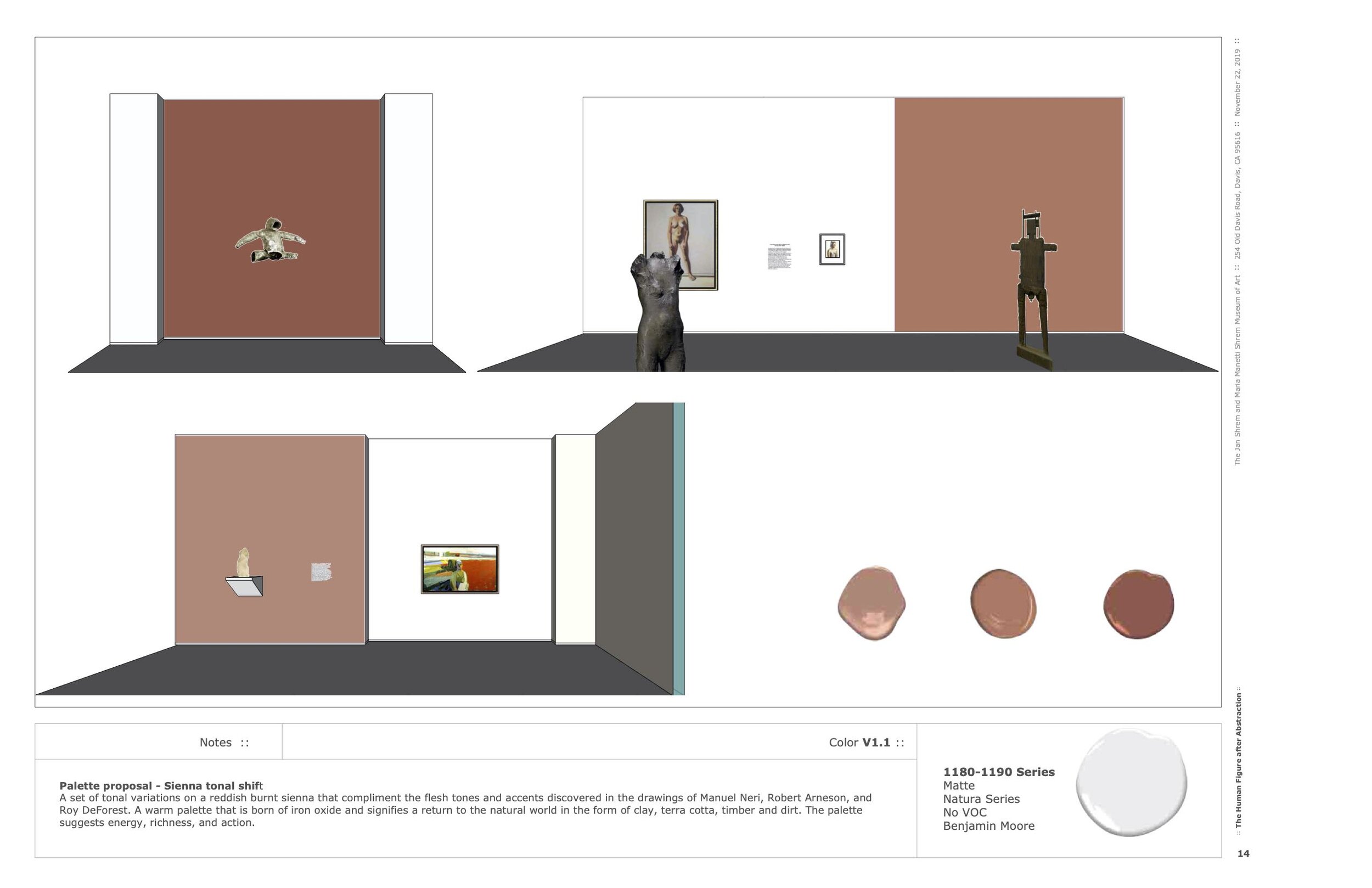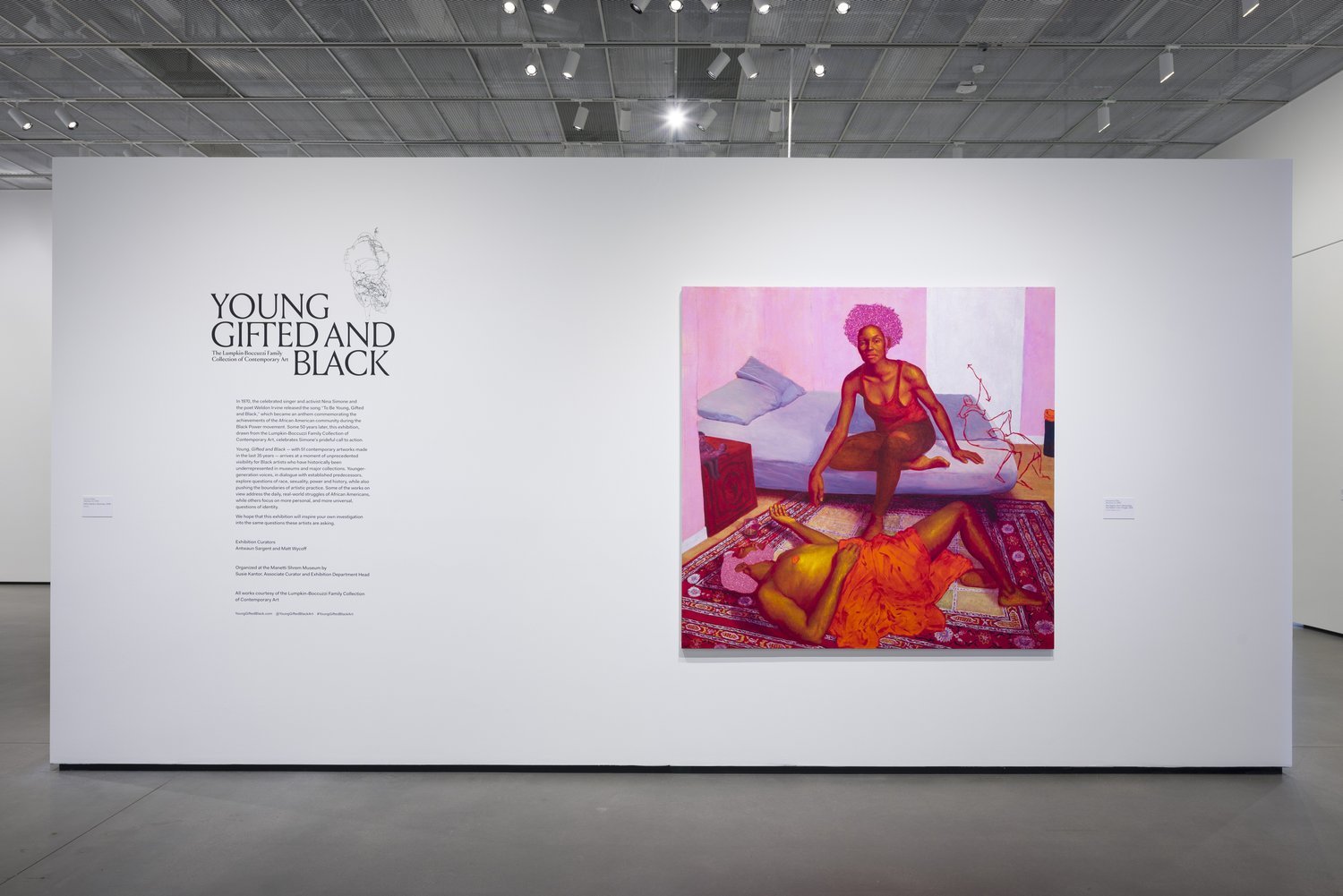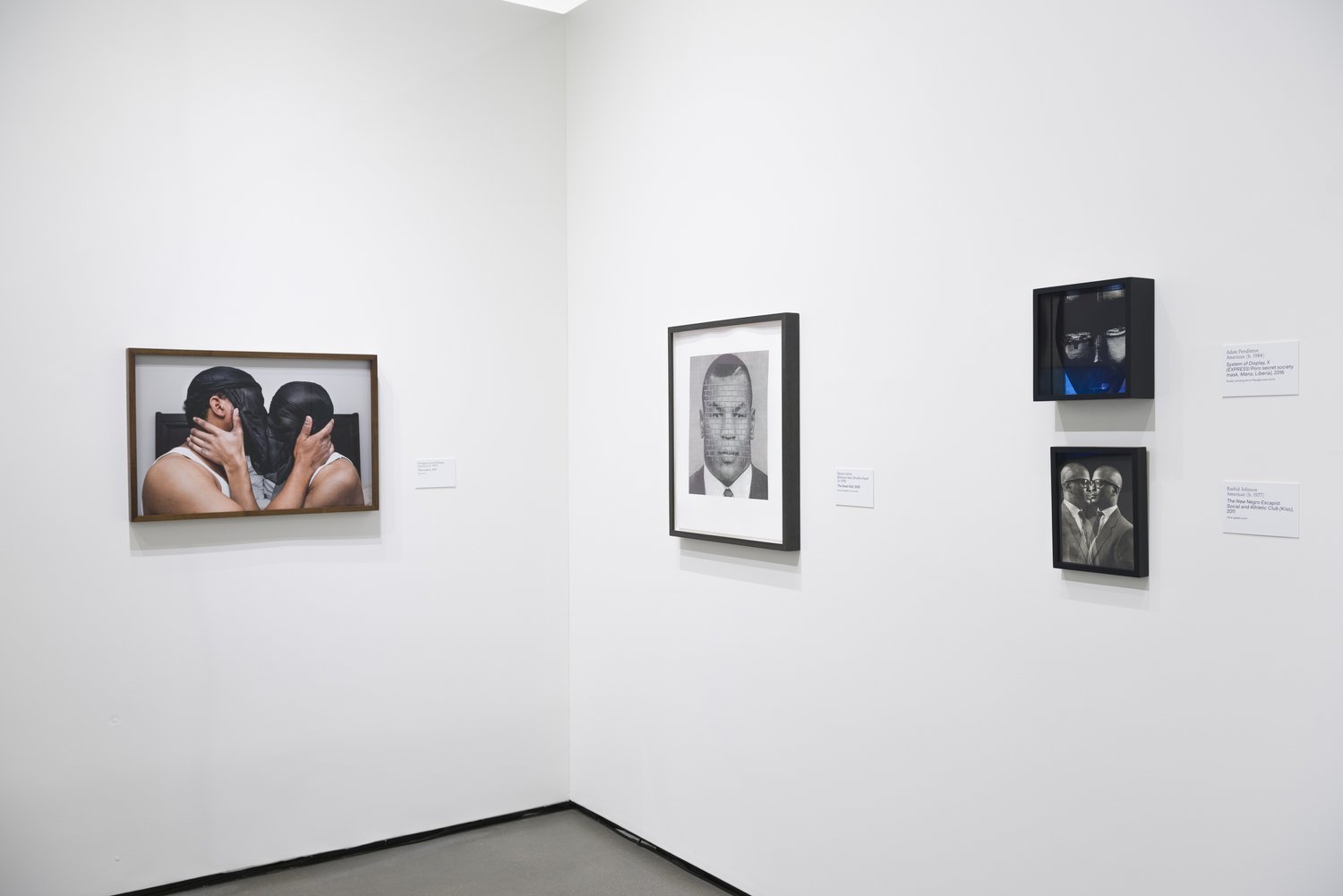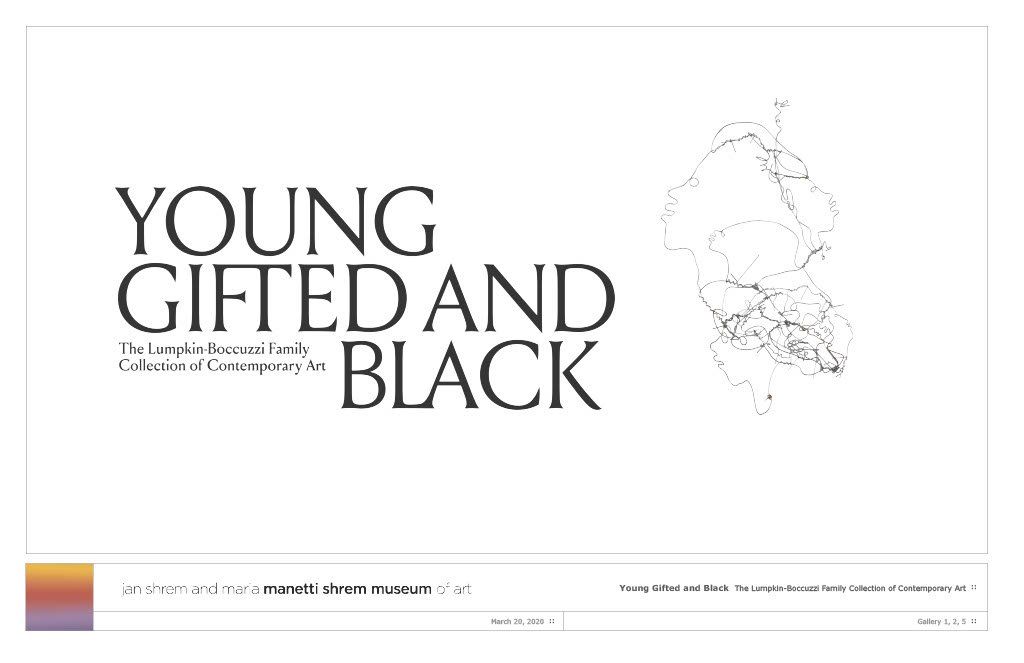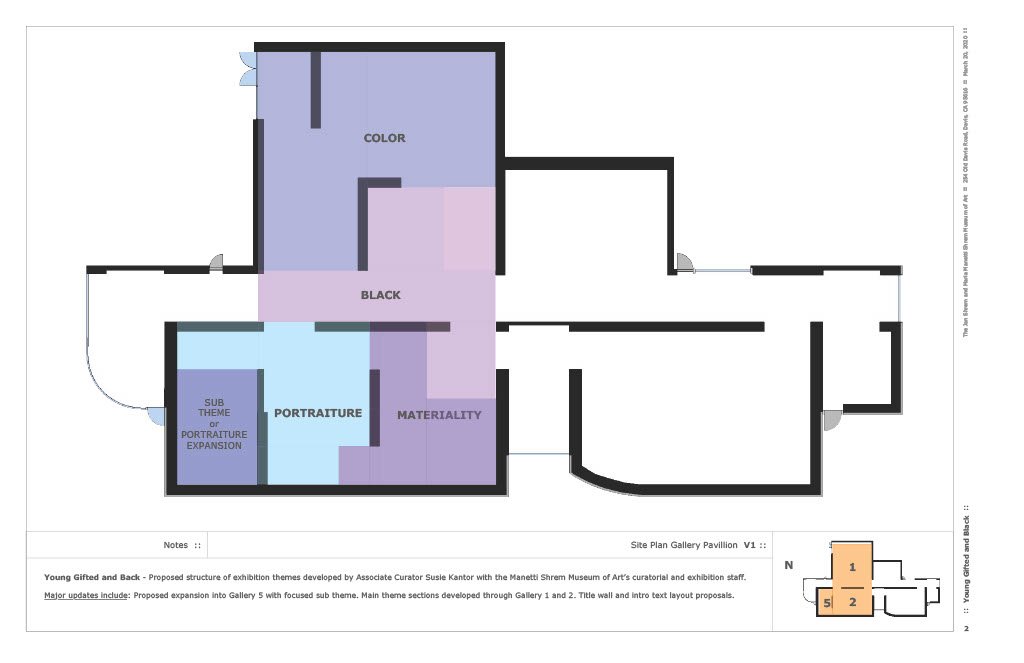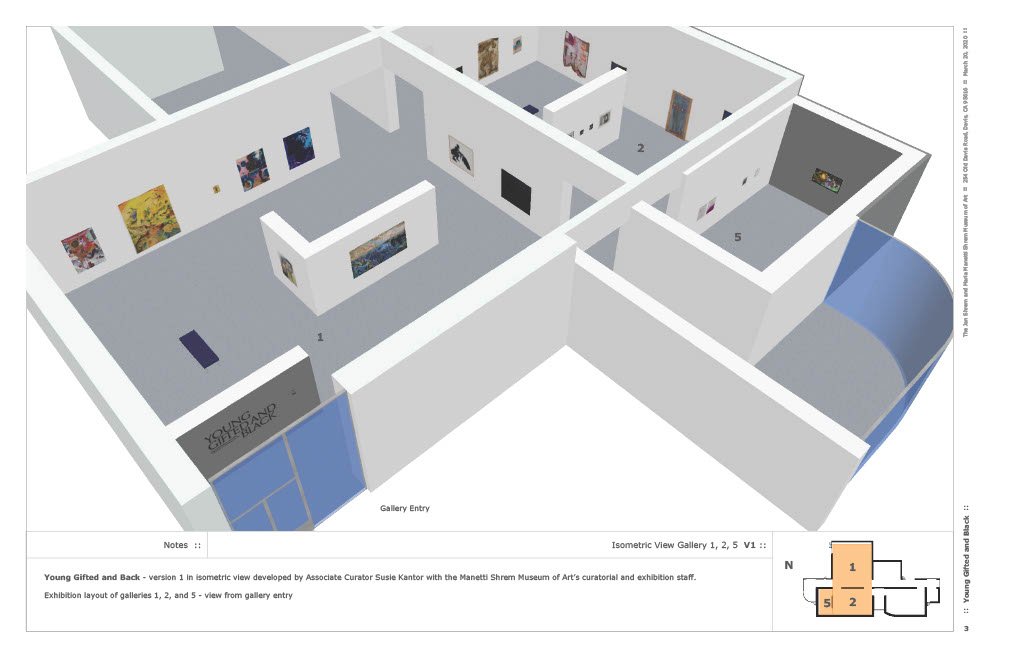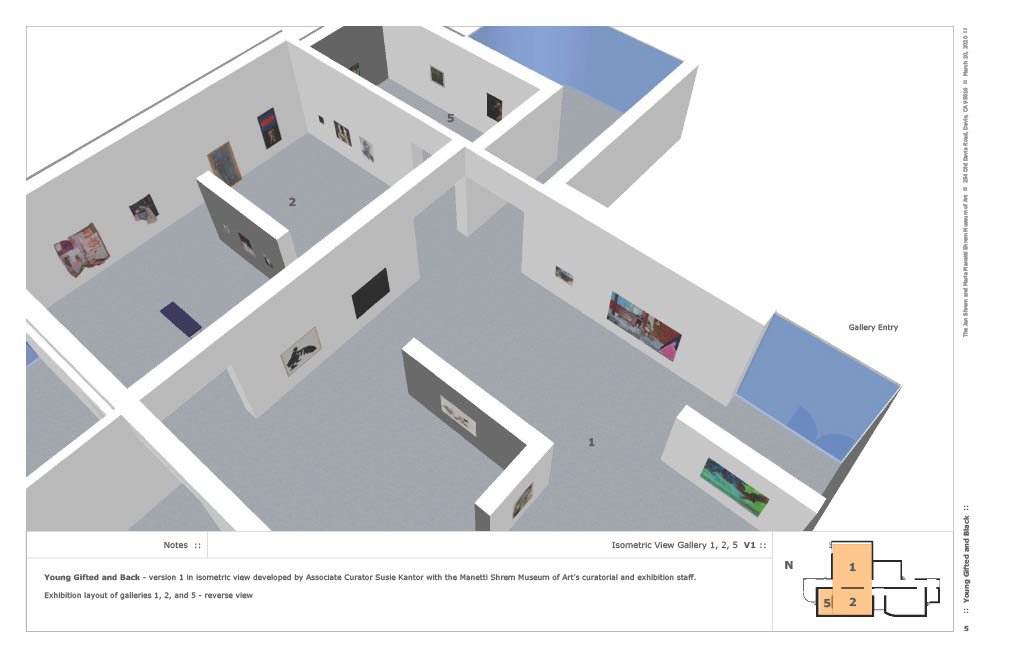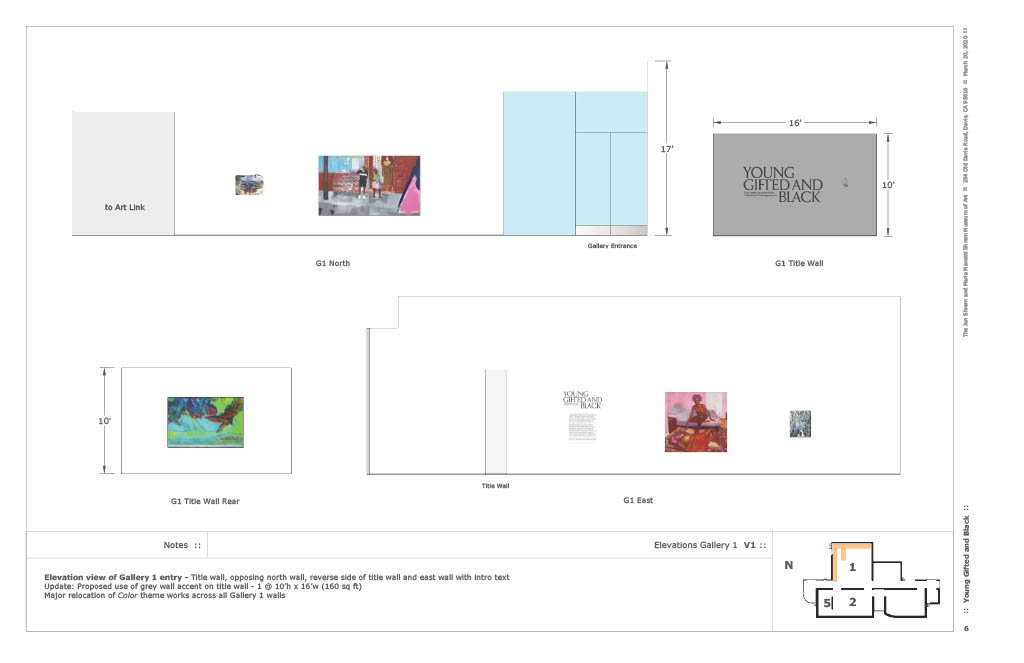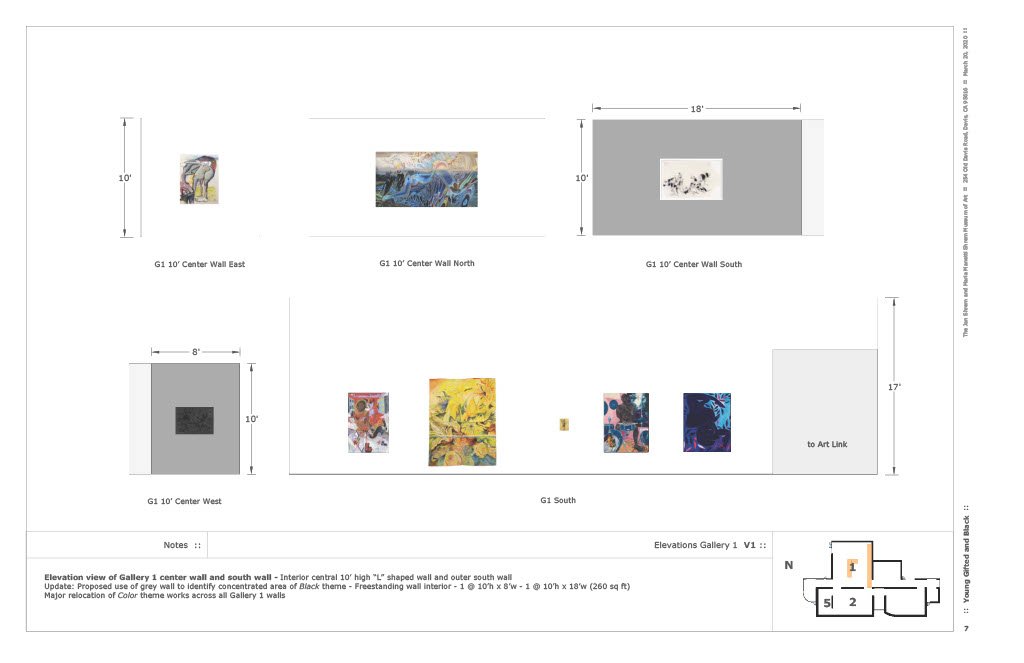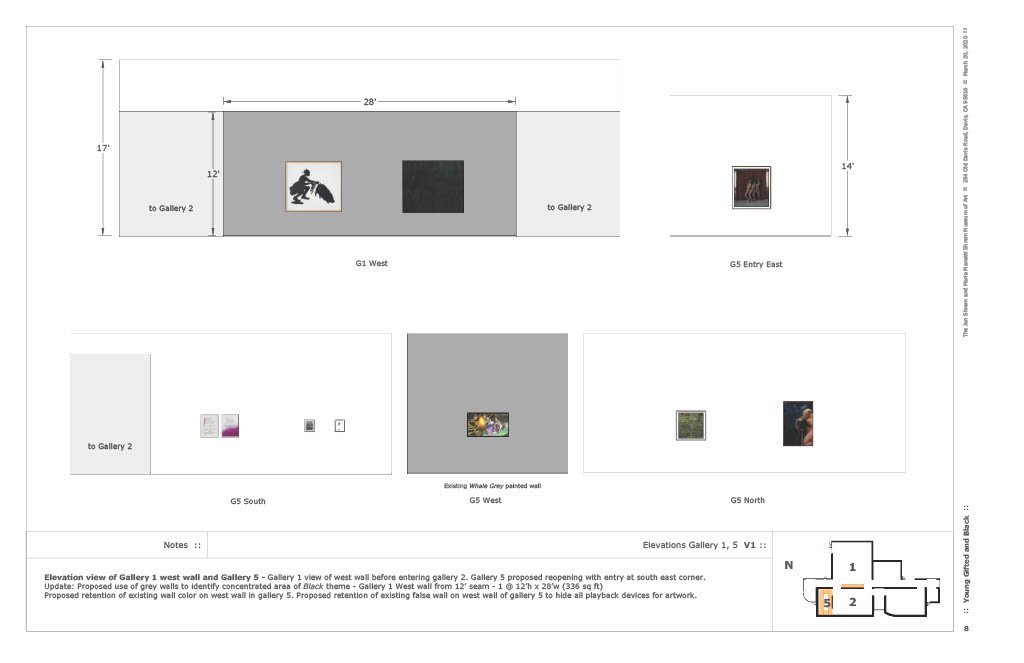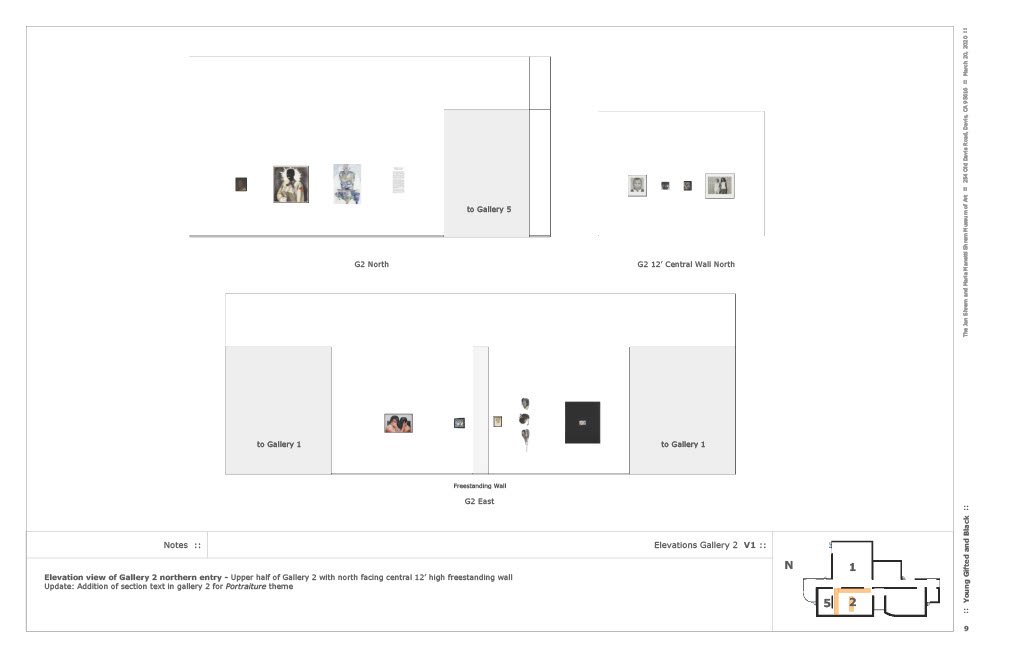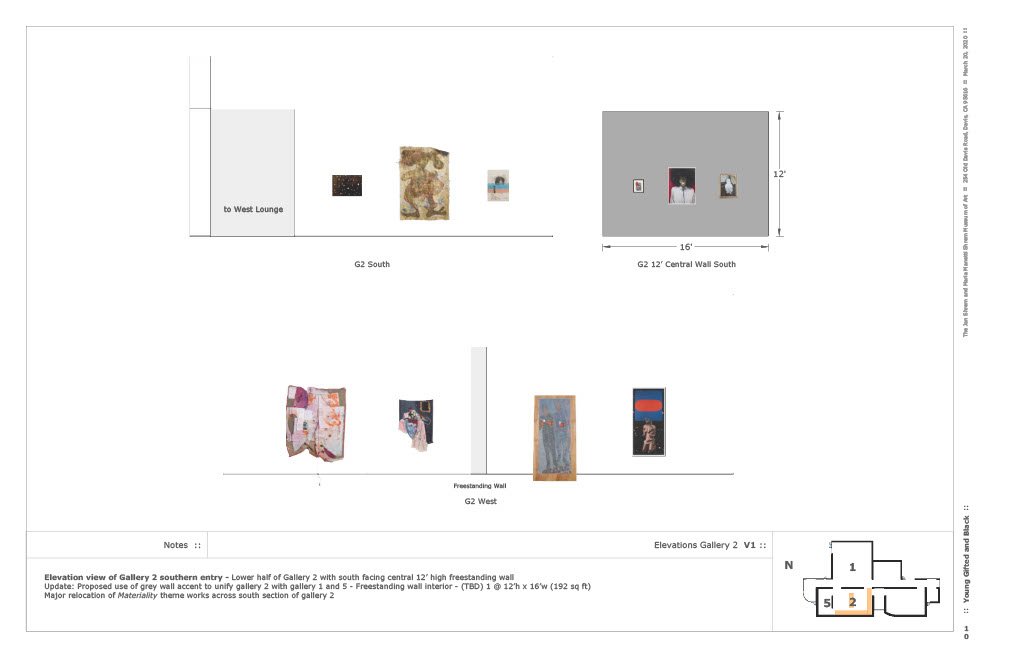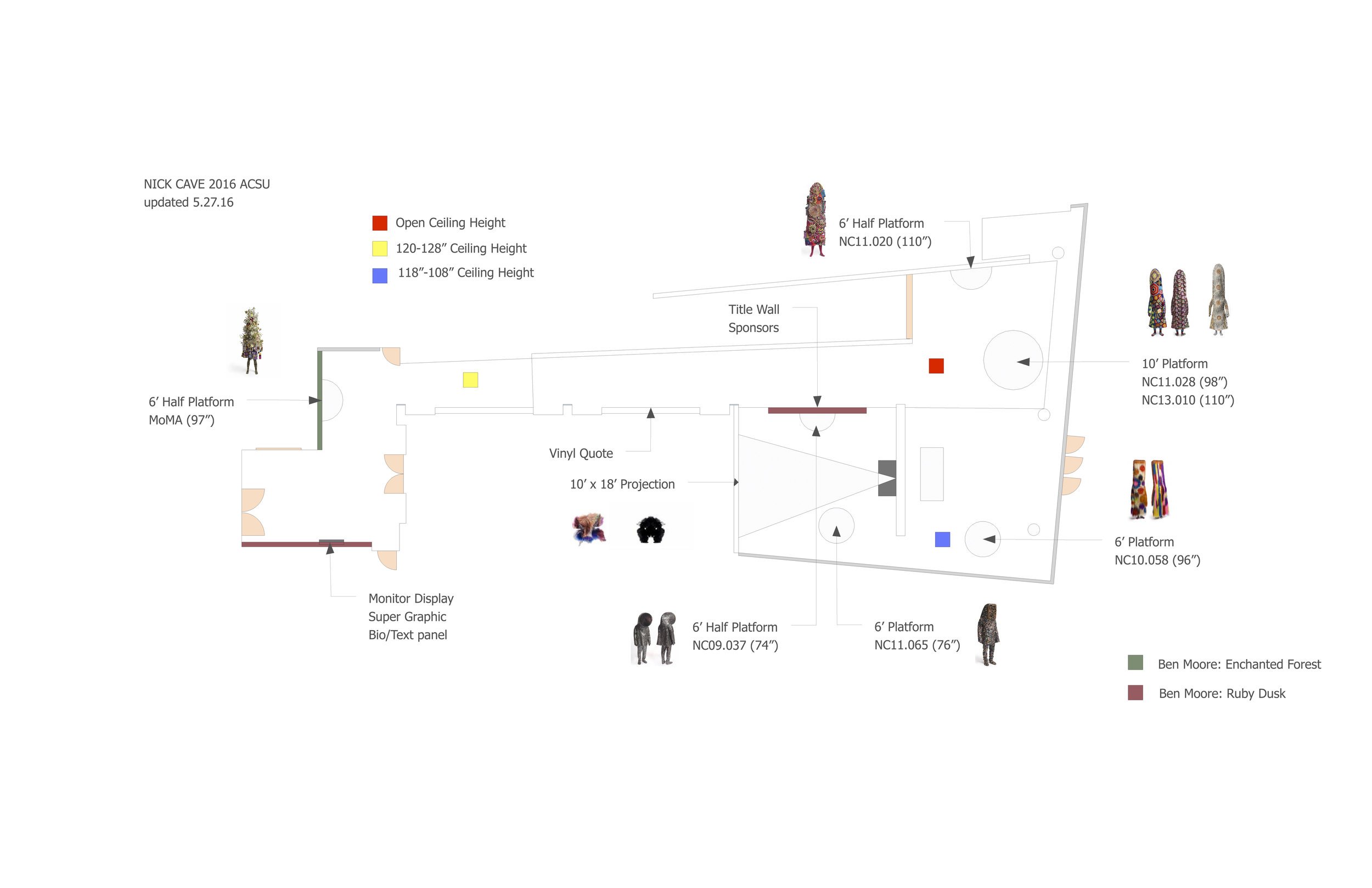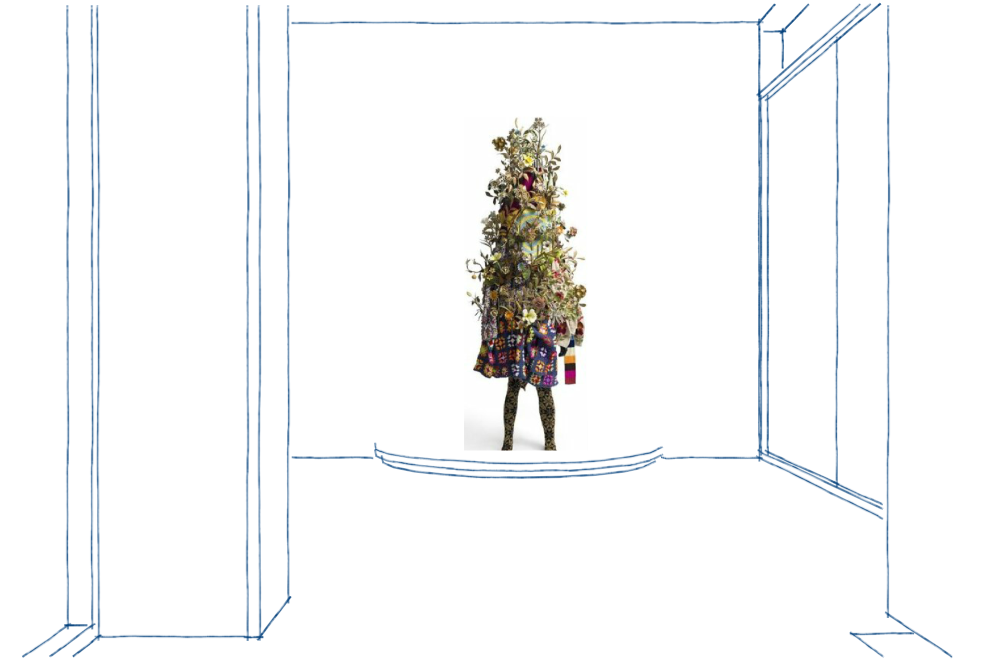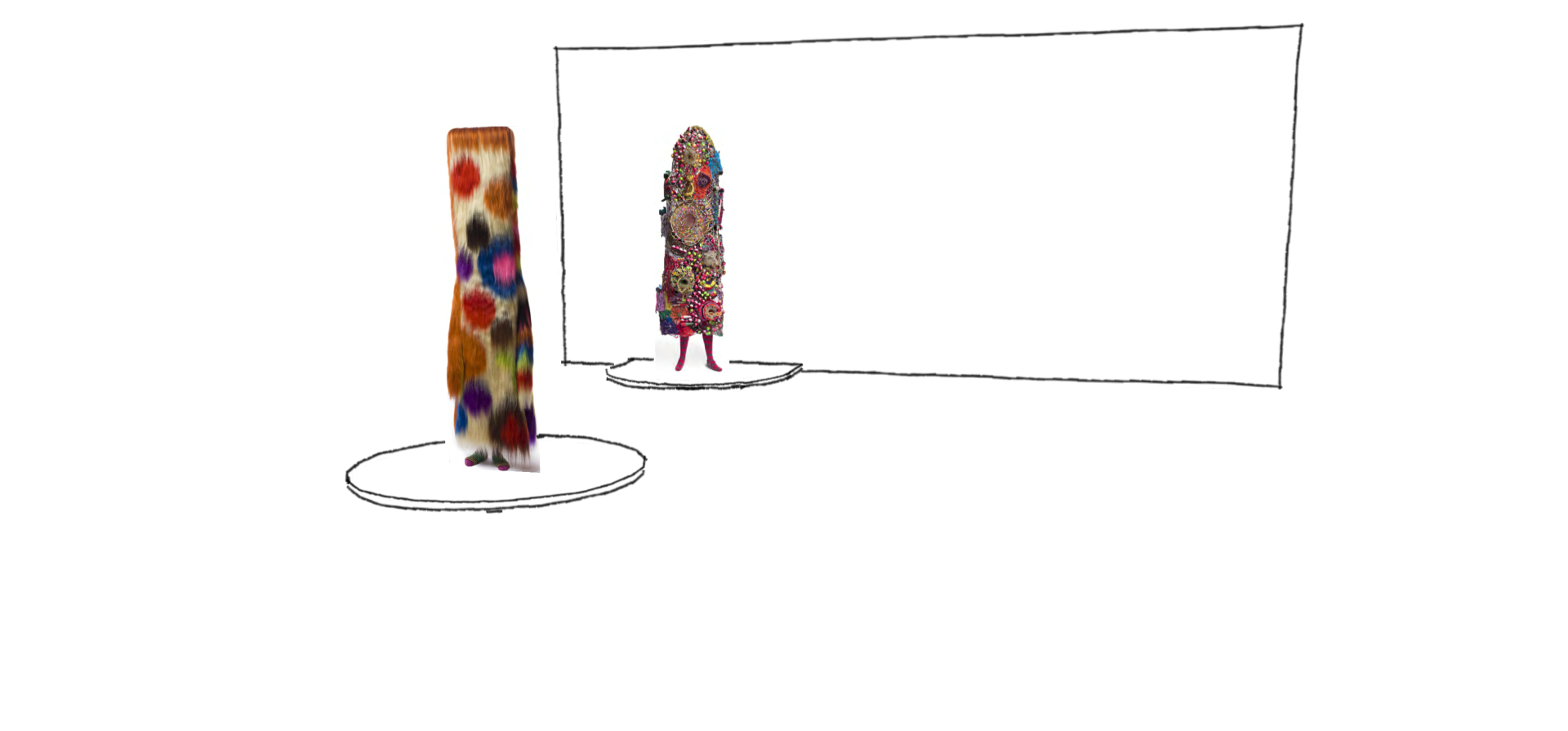EXHIBITION DESIGN
1
Fall 2019
PROJECT: Permanent collection exhibition at the Jan and Maria Manetti Shrem Museum of Art ROLE: Exhibition Designer, furniture designer, fabrication supervisor
Complete exhibition planning, research and design for permanent exhibition of sculptural and pictorial artworks. Key emphasis for display included the application of the renewable, architectural LEED material Richlite as a display platform for freestanding figures in bronze and plaster as well as the designation of color as a signifier and wayfinding tool for visitor circulation. Layout and compositional vision developed with curatorial team, with revision and iterations informed by Registration, Education, and Visitor Services departments. Complete exhibition design services included all interior elevations, design renderings, prototypes, technical specifications, production supervision, and installation.
Proposal package with floorpans, elevations, casework renderings, layout, color selections and all corresponding notations and rationale.
2
Spring 2020
PROJECT: Temporary exhibition at the Jan and Maria Manetti Shrem Museum of Art ROLE: Exhibition Designer
Working within parameters set by the Lumpkin-Boccuzzi Family Collection’s curatorial team, 3-dimensional renderings and elevations were developed for both internal and external stakeholders. Project stages included consultation and rough layout with the curatorial team, revised floorpans to detail the thematic placement (massing), along with scaled elevations and iterative layouts.
Proposal package with thematic massing, 3-d modeling, elevations and all corresponding notations and rationale.
3-D modeled exhibition fly-through.
3
Spring 2016
PROJECT: Temproary exhibition at the Anderson Collection at Stanford University ROLE: Exhibition Designer, furniture designer, fabricator
Full scale figurative sculptures placed throughout the entry foyer and focus galleries of the museum. The design and layout emphasize clustering for a paced experience with a sense of discovery. Plinths are designed to supply optimal accessibility so visitors can experience the sculptures in the round, while still maintaining a safe, edge-free, barrier. Phases to launch include casework design, checklist planning, artwork field measurements, floorpans, 3-D model simulations, mock ups, research and material procurement, fabrication and assembly.
Site plan layout with artwork placement, iterative display sketches.
